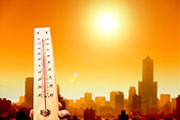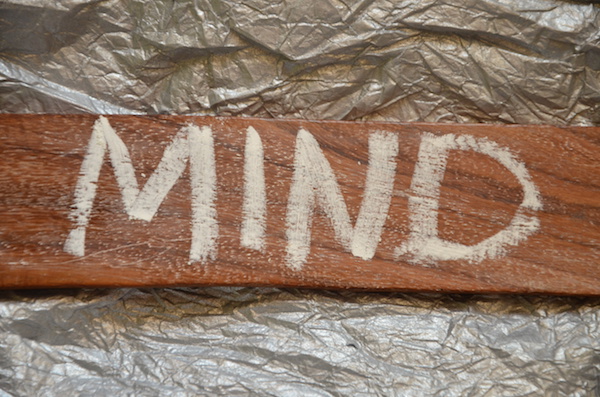
MONDAY, Aug. 17, 2015 (HealthDay News) — Hot, humid weather will blanket much of the eastern United States the first half of this week, putting millions of people at risk for heat-related health problems.
From Washington, D.C., to Philadelphia, to New York, to Boston, temperatures will run as high as the mid-90s, unusually warm for this late in summer.
Extreme heat and humidity also extends into Canada, with Toronto projected to reach a high of 90 degrees Monday, with a heat index of 104 degrees if you factor in the humidity.
Record-breaking heat has been scorching much of the western United States for days. Phoenix reached a high of 115 degrees on Saturday, a new record for Aug. 15. And Santa Cruz, Calif., topped out at 101 degrees on Saturday, beating the previous record high for Aug. 15 by 13 degrees.
While these high temperatures and humidity levels can be a serious threat to health, there are a number of things you can do to protect yourself and others, said Dr. Robert Glatter, an emergency physician at Lenox Hill Hospital in New York City.
“It’s vital to drink plenty of cool fluids, and stay out of the sun during the mid-part of the day (10 a.m. to 2 p.m.) when the sun is typically the strongest,” Glatter said in a hospital news release.
Try to stay indoors where air conditioning is available. If you don’t have air conditioning and can’t get to a location with air conditioning, spray water mist on your skin and use a fan to help cool yourself off. Try to avoid exertion.
Keep an eye on seniors and children because both are at higher risk for heat-related illnesses, Glatter said.
When you go outside, wear loose-fitting, light-colored clothing, and a wide-brimmed hat. Apply sunscreen, and reapply it every two hours while you’re in the sun.
“Never leave a child in a parked car in the summertime. When it is 90 degrees outside, the temperature can climb to over 150 degrees in the car in as little as 15 to 20 minutes. Even when it is 70 degrees outside, the temperature can climb to well over 100 degrees in under 30 minutes. The windows in the car trap heat, almost like a greenhouse effect,” Glatter said.
If you plan to exercise in the heat, even for less than one hour, drink cool water before you begin, as well as after your workout.
“Under one hour of exercise, sports drinks and salt replenishment are generally unnecessary. That said, the heat index and humidity are important factors in your choice of ideal fluid,” Glatter said.
If you plan to be exercising in the heat and humidity for more than an hour, it’s important to consume a sports drink, in addition to water, to replenish the salt lost from sweating, Glatter said. “A few salty pretzels are also a good alternative to a sports drink if you prefer,” he added.
“Heat cramps and heat exhaustion are the most common heat-related illnesses. Nausea, dizziness, and muscle cramping are most common with this condition. Skin may be cool and moist with profuse sweating. IV fluids may be necessary in persons to help reduce symptoms. A cool air-conditioned environment is also essential to help persons more effectively cool their bodies,” Glatter said.
Heat stroke is a serious medical emergency, Glatter said. “Patients may develop temperatures up to 106 to 108 (degrees), with confusion and disorientation, and loss of ability to produce sweat to cool the body. Skin is generally is red, hot and dry. Cooling ice baths and misting fans can help reduce core temperatures,” he explained.
Glatter said that typical medications such as ibuprofen and acetaminophen aren’t helpful with such elevated temperatures, and “in fact may be harmful.”
More information
The U.S. Centers for Disease Control and Prevention has more about extreme heat.
Copyright © 2024 HealthDay. All rights reserved.

